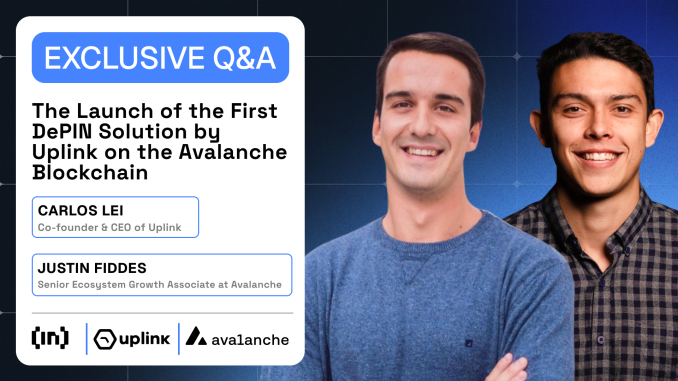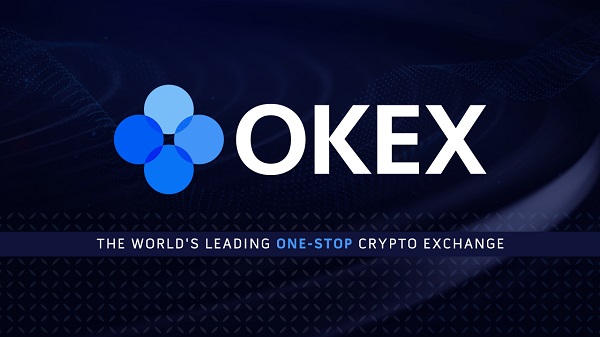
On December 12th, Uplink and Avalanche made a significant announcement about Uplink launching the first Decentralized Physical Infrastructure Network (DePIN) on Avalanche Blockchain.
We asked Carlos Lei, the Co-founder and CEO of Uplink and Justin Fiddes, Senior Ecosystem Growth Associate of Avalanche to provide an exclusive interview to BeInCrypto and share insights on their latest advancements in bridging the global connectivity gap and enhancing decentralized privacy.
BIC: What are the core technological and industry challenges Uplink is addressing, particularly in the telecom sector, and how does the concept of DePIN redefine infrastructure in this space?
Carlos Lei: Uplink is redefining internet infrastructure by introducing a decentralized approach to connectivity. The telecom sector is grappling with skyrocketing data demands fueled by an increased number of connected devices, AI, AR, and other data-intensive technologies. Traditional infrastructure models are no longer sustainable—escalating capital and operational costs make scaling to meet these demands increasingly unfeasible.
Since 2016, Uplink has been at the forefront of telecom innovation, leveraging software solutions like mesh networks and SDKs to Web3 development. Through this journey, we identified a critical gap: the absence of robust incentive mechanisms and the untapped potential of global communities as active participants in infrastructure expansion.
DePIN redefines connectivity by enabling anyone to contribute to the network using their existing resources, such as Wi-Fi routers. This model decentralizes not just infrastructure but also ownership and incentives, fostering a scalable, cost-effective, and secure ecosystem. Uplink is uniquely positioned to bridge the gap between supply and demand in the telecom space, creating a connectivity solution that is both enterprise-grade and community-driven.
BIC: How does Avalanche’s blockchain technology empower projects like Uplink to overcome these challenges, and what unique features make Avalanche an ideal choice for enabling scalable and secure DePIN ecosystems?
Justin Fiddes: Avalanche offers DePIN protocol, a unique solution not found in any other ecosystem. Avalanche gives DePIN protocols, like Uplink, the ability to launch their own permissionless, sovereign L1s. These L1s can be highly customizable at a foundational level, allowing protocols to choose their VM, precompiles, gas token, and gas parameterization.
Further, these Avalanche L1s do not need to compete with other gas-intensive dapps like they would on a monolithic chain. This gives Avalanche L1s a superior UX for end-users, enabling protocols to abstract away the complexities of blockchain backends.
Finally, all Avalanche L1s are still connected and interoperable with one another, thanks to Avalanche Warp Messaging (AWM). These L1s can all communicate and transact with one another using AWM, which creates a ‘many chains, that feel like one’ experience for the end user.
BIC: Could you walk us through how Uplink’s solution works in practice, particularly the Provider dashboard? What motivated its creation, and how has it driven engagement in the community?
Carlos Lei: The Uplink Explorer and Dashboard were designed as intuitive tools for our community to actively participate in the decentralized connectivity ecosystem. Through these platforms, users can sign up and indicate, via a dynamic map, where they are willing to provide connectivity. This data serves as a critical bridge between our providers and enterprises or telecommunications companies seeking to expand their networks. By enabling these companies to utilize and purchase excess bandwidth from our providers, we create a seamless solution to extend internet coverage efficiently and cost-effectively.
Our primary motivation in launching this program was to validate the willingness and ability of the community to contribute supply. The response has been overwhelming: within just three months of launch, we’ve seen 150,000 user registrations and 125,000 router pre-registrations on our platform. These numbers affirm not just the viability of our model but also the community’s enthusiasm for reshaping the future of connectivity.
We’ve invested heavily in crafting an engaging onboarding process for the community, simulating the functionality of the network even before it goes live. This approach has been instrumental in fostering early adoption and sustained engagement. Our growth is entirely fueled by our community’s belief in our vision and their trust in our commitment to building a long-term, transformative solution for connectivity.
BIC: With more than 150,000 users already onboarded, what are the standout features that have contributed to this growth, and how do you plan to scale further in 2025 to expand geographically and accelerate adoption?
Carlos Lei: The beta version of our platform represents just the foundation of what Uplink will become with the full launch of the Uplink App. Currently, users can register on the platform, pre-register their routers, visualize their contributions on a global map, and engage with our community through social channels, ambassador programs, and referral incentives. This streamlined approach focuses on building a strong, engaged community that directly contributes to and benefits from the platform’s growth.
Looking ahead to 2025, we’re entering what we call ‘the year of running.’ Key milestones include router validation and the introduction of new features that enhance network visibility, quality, and usability—critical steps toward revolutionizing the telecom industry. Once routers are validated, participants will begin earning points continuously as their routers remain online and are able to provide connectivity.
Additionally, we’re launching our Testnet to enable on-chain activities, offering the community a hands-on preview of our decentralized operations. This will culminate in the launch of our on-platform token, unlocking functionality for global connectivity, data rewards, and seamless transactions for data consumption and providing.
Our roadmap for 2025 focuses on scaling through partnerships, real-world usability, and incentivized community engagement. With these advancements, we aim to expand our geographical footprint, accelerate adoption, and solidify Uplink as a transformative force in decentralized connectivity.
BIC: How does Avalanche’s ability to connect with other blockchains enhance the interoperability and adoption of DePIN solutions like Uplink? Why is this critical for building a unified and scalable decentralized ecosystem?
Justin Fiddes: Thanks to the recent upgrade of Avalanche9000, the biggest upgrade in Avalanche’s history, Avalanche L1s can now be completely permissionless proof-of-stake blockchains. This enables the next wave of protocols to build on Avalanche and the next wave of validation opportunities within Avalanche. We see a world where there are hundreds of permissionless Avalanche L1s and tens of thousands of unique validators of these protocols. The Avalanche network allows users to participate in the validation of these chains and we believe there will be a large cross-pollination of validators, validating many Avalanche L1s.
All of these networks will be connected to one another by Avalanche Warp Messaging (AWM), where networks can pass data or assets between one another. The culmination of Avalanche9000 and AWM means that DePin protocols, such as Uplink, can launch their own sovereign chains with hundreds of validators and enable their users to transact with many of the other Avalanche L1s that are launching. Creating a virtuous self-sustaining ecosystem.
Disclaimer
In compliance with the Trust Project guidelines, this guest expert article presents the author’s perspective and may not necessarily reflect the views of BeInCrypto. BeInCrypto remains committed to transparent reporting and upholding the highest standards of journalism. Readers are advised to verify information independently and consult with a professional before making decisions based on this content. Please note that our Terms and Conditions, Privacy Policy, and Disclaimers have been updated.





Be the first to comment